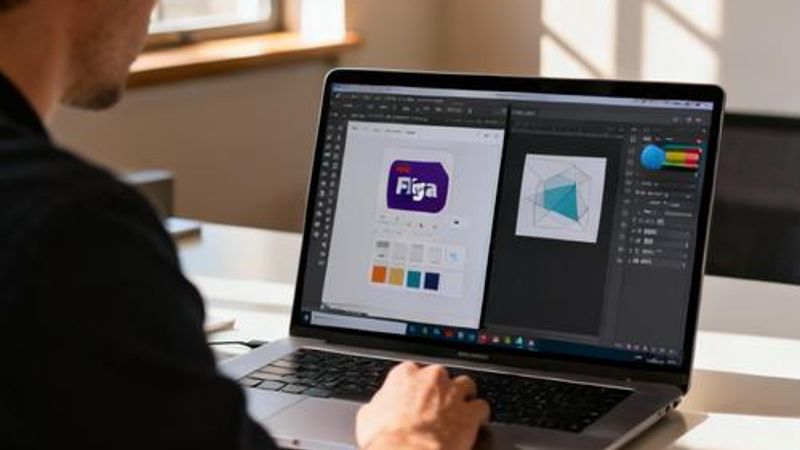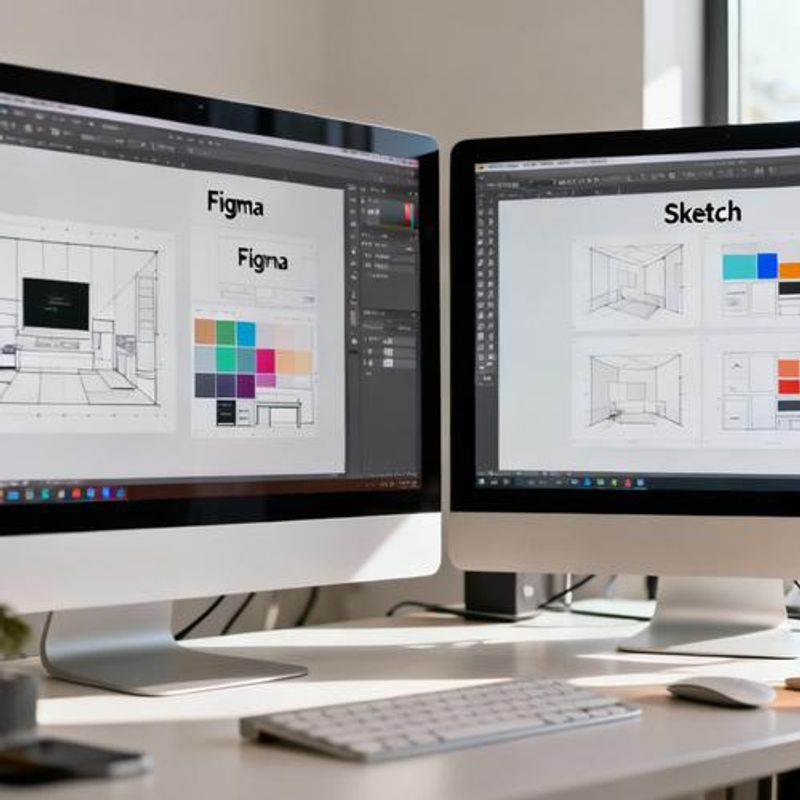Figma vs Sketch: The Complete 2024 Guide for Mid-Level Designers

Choosing between Figma and Sketch can make or break your design workflow efficiency. As a mid-level designer, you're likely facing pressure to deliver faster, collaborate better, and justify tool costs to stakeholders. This comprehensive comparison will help you make an informed decision based on real-world usage scenarios, team dynamics, and career trajectory considerations.

Why This Choice Matters for Your Design Career
The tool you choose impacts daily productivity, team collaboration, and long-term skill development. Mid-level designers often inherit tool decisions or face migration pressure from legacy workflows. Understanding the nuanced differences between Figma and Sketch helps you advocate for better tools, optimize existing workflows, and position yourself strategically in the job market where tool expertise increasingly matters.
Quick Decision Framework: Figma vs Sketch
Choose Figma if you prioritize real-time collaboration, cross-platform compatibility, and integrated prototyping. Choose Sketch if you work primarily on Mac, value native performance, and rely heavily on the plugin ecosystem. Here's what matters most:
- Team collaboration needs: Figma excels in real-time co-editing and stakeholder feedback
- Platform requirements: Sketch is Mac-only, Figma works everywhere
- Performance priorities: Sketch offers superior native speed for complex files
- Workflow integration: Consider existing tool stack and handoff processes

Collaboration and Workflow Impact
Figma revolutionizes design collaboration through browser-based real-time editing. Multiple designers can work simultaneously on the same file, while stakeholders provide contextual feedback without additional software. Version control happens automatically, eliminating the sync issues that plague Sketch workflows. However, this collaborative power comes with trade-offs in offline capability and file performance with complex documents.
Sketch maintains the traditional file-based approach, offering better performance and offline reliability. The Abstract integration provides professional version control, while InVision or Principle handle prototyping needs. This modular approach gives you best-in-class tools for specific tasks but requires more coordination overhead and licensing costs.
Performance and Technical Considerations
Sketch leverages native macOS frameworks for superior performance with large, complex files. The application feels responsive even with hundreds of artboards and detailed design systems. Plugin architecture provides deep customization options, from automated asset generation to design token synchronization.
Figma's browser-based architecture occasionally struggles with extremely complex files but compensates with seamless cross-platform access and automatic updates. The component system and auto-layout features rival or exceed Sketch's capabilities, while built-in prototyping eliminates tool switching for many workflows.
Design System and Component Management
Both tools excel at component-based design but with different strengths. Figma's component system includes variants, auto-layout, and boolean operations that create more flexible, maintainable design systems. The shared library system automatically propagates updates across projects, crucial for scaled design operations.
Sketch symbols remain powerful but require more manual management. The nested symbol system works well for complex components, while libraries sync across team members. However, maintaining consistency across multiple Sketch files requires more discipline and tool coordination than Figma's centralized approach.

Common Migration Pitfalls and How to Avoid Them
Switching tools mid-project creates workflow disruption and team confusion. The biggest mistake is assuming feature parity - each tool handles typography, effects, and export differently. Plan migrations during project lulls, establish new component libraries before switching, and maintain parallel workflows during transition periods. Don't underestimate the learning curve for advanced features like auto-layout or advanced prototyping.
Making Your Decision: Next Steps
Start with a 30-day trial of your preferred tool using a real project, not tutorial exercises. Test collaboration scenarios with actual stakeholders and evaluate performance with your typical file complexity. Consider your team's platform mix, existing tool investments, and long-term design system needs. The right choice depends on your specific context, not industry trends or peer pressure.